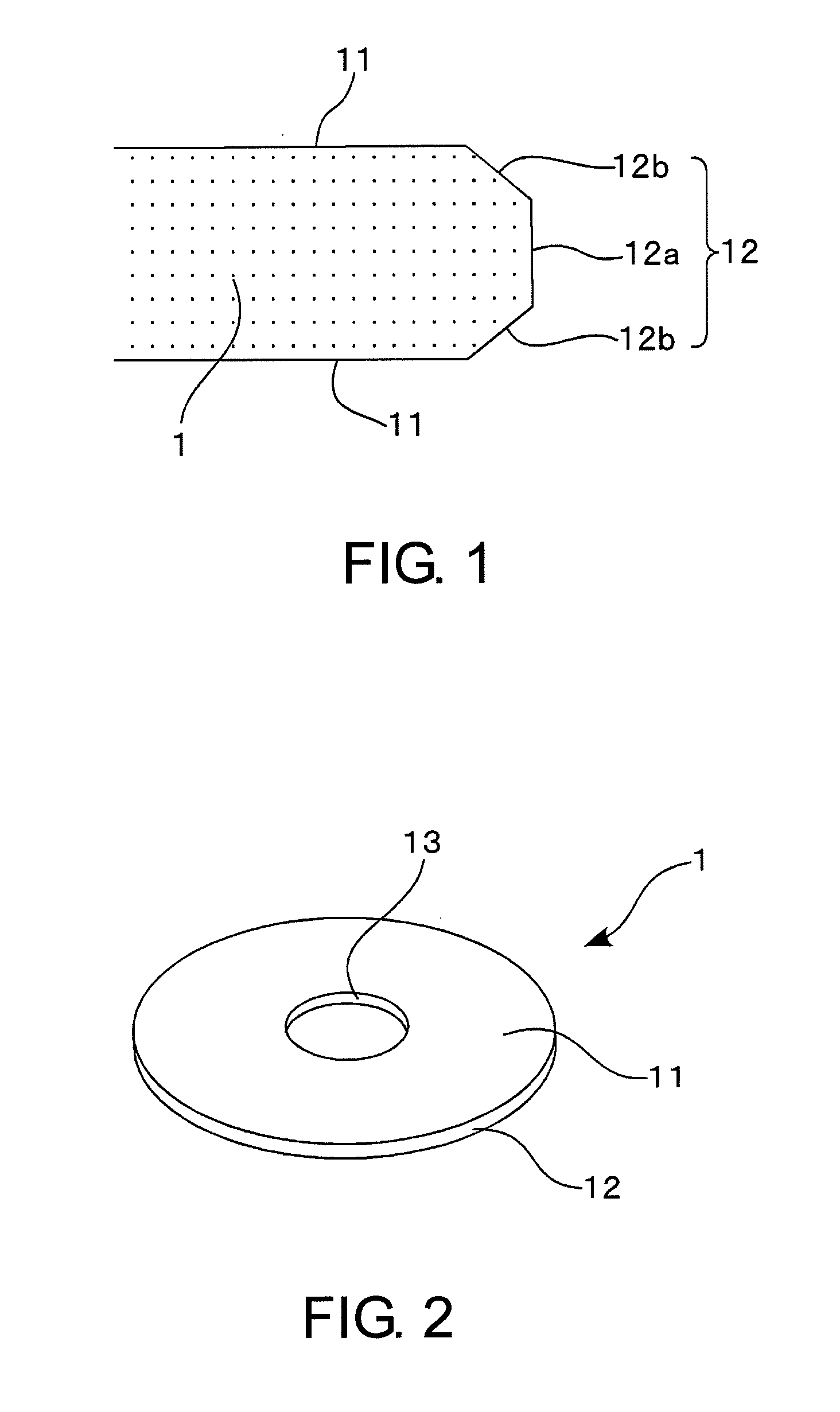Method of manufacturing a glass substrate for a magnetic disk and method of manufacturing a magnetic disk
a glass substrate and magnetic disk technology, applied in the direction of cleaning using liquids, lapping machines, other chemical processes, etc., can solve the problems of increasing the possibility of collision with the magnetic head, increasing the roughness, and degrading the end face shape, so as to reduce the roughness of the main surface of the substrate and reduce the cost. , the effect of less surface defects
- Summary
- Abstract
- Description
- Claims
- Application Information
AI Technical Summary
Benefits of technology
Problems solved by technology
Method used
Image
Examples
example 1
[0095]A magnetic disk glass substrate of this Example was manufactured through (1) Rough Lapping Process (Rough Grinding Process), (2) Shaping Process, (3) Precision Lapping Process (Precision Grinding Process), (4) End Face Polishing Process, (5) Main Surface First Polishing Process, (6) Chemical Strengthening Process, and (7) Main Surface Second Polishing Process, which will be described hereinbelow.
[0096](1) Rough Lapping Process
[0097]First, a disk-shaped glass substrate made of an aluminosilicate glass and having a diameter of 66 mm and a thickness of 1.0 mm was obtained from a molten glass by direct pressing using upper, lower, and drum molds. Alternatively, a plate glass may be manufactured by a downdraw method or a float method and then cut into a disk-shaped glass substrate with a predetermined size. As the aluminosilicate glass, use was made of a glass for chemical strengthening containing 58 wt % to 75 wt % SiO2, 5% W % to 23 wt % Al2O3, 3 wt % to 10 wt % Li2O, and 4 wt % ...
example 2
[0118]The glass substrate was manufactured in the manner similar to Example 1 except that colloidal silica abrasive particles having an average particle size of 10 nm were used in the main surface second polishing process in Example 1.
example 3
[0119]The glass substrate was manufactured in the manner similar to Example 1 except that colloidal silica abrasive particles having an average particle size of 40 nm were used in the main surface second polishing process in Example 1.
PUM
| Property | Measurement | Unit |
|---|---|---|
| Fraction | aaaaa | aaaaa |
| Particle size | aaaaa | aaaaa |
| Concentration | aaaaa | aaaaa |
Abstract
Description
Claims
Application Information
 Login to View More
Login to View More - R&D
- Intellectual Property
- Life Sciences
- Materials
- Tech Scout
- Unparalleled Data Quality
- Higher Quality Content
- 60% Fewer Hallucinations
Browse by: Latest US Patents, China's latest patents, Technical Efficacy Thesaurus, Application Domain, Technology Topic, Popular Technical Reports.
© 2025 PatSnap. All rights reserved.Legal|Privacy policy|Modern Slavery Act Transparency Statement|Sitemap|About US| Contact US: help@patsnap.com



